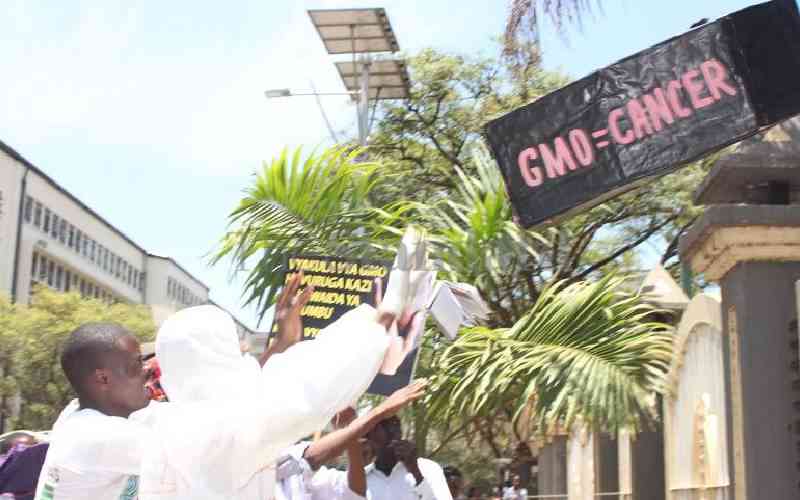
At least six deaths and 271 new cases of cholera have been reported in the country in the past two weeks.
The deaths, according to cholera situation report by the Ministry of Health, have been reported in Mombasa (1), Homa Bay (3) and two in Siaya County.
Ten counties have also been listed to have active cases of cholera, among them Homa Bay, Nairobi, Siaya, Garissa, Mombasa, Kiambu, Kajiado, Isiolo Wajir and Marsabit.
"Nineteen new cholera cases were reported in the last 24 hours, bringing the total number of cases to 10,784 as of May 24, 2023. The counties reporting new cases are Homa Bay (13), and Nairobi (6)," reads a section of the Ministry's cholera situation report.
An outbreak of cholera in Kenya was reported in October last year in Kiambu County. However, seven months later, the disease is yet to be controlled, despite oral cholera vaccination in epicentre counties.
To control the spread of the disease, the Ministry launched oral cholera vaccination in March, in Wajir, Nairobi, and Tana River counties.
An estimated 2.2 million people were vaccinated in the Tana River, Wajir, Nairobi and Garissa.
- Ministry issues cholera alert amid floods, medics' strike
- Dozens of cholera cases reported in flood-hit Kenya
- WHO: Cholera deaths surged 70pc worldwide last year
Keep Reading
In a March report, the Ministry attributed cholera deaths and a surge in cases to inadequate resources to facilitate testing of the disease.
Shortage of laboratory reagents also hamper the fight against cholera, according to the Ministry.
"Inadequate resources to facilitate critical response pillars limiting response capacity in detecting, investigating, and follow-up of cases, especially lack of laboratory re-agents," reads a section of the Ministry's report.
Other challenges included inadequate capacity of healthcare workers trained in cholera case management, and competing activities.
Cholera is an acute bacterial disease as a result of consuming food which is contaminated with the bacterium Vibrio cholerae.
The disease causes severe acute watery diarrhoea, vomiting, and dehydration which leads to death, if not treated on time.
A number of risk factors driving the disease namely outsourcing of food vendors with questionable hygiene standards, congestion in the refugee camps and sourcing of water from contaminated sources due to the prolonged drought.
Other factors as per experts include poor sanitation in informal urban settlements and sprouting of unregulated water vendors.

Since October last year, an outbreak of the disease has been reported in 24 counties, with a total of 10, 784 cases.
The counties are Garissa (2, 789), Mandera (2,019), Nairobi (1,986), Wajir (847), Tana River (780), Kiambu (510), Machakos (491), Kajiado (394), Uasin Gishu (137), Homa Bay (133), Marsabit (109), 105 cases in Mombasa and 91 in Siaya.
Other counties include Meru, Samburu, Kisumu, Nyeri, Murang'a, Kitui, Isiolo, West Pokot, Nakuru, Bomet and Kirinyaga.
Of the cumulative cases, 5,659 (52 percent) are males, 5,125 (48 percent) are females, whereas 3, 631 are in the age group of below 10 years.
Additionally, of the 177 deaths, 78 are from Nairobi and Tana River Cuties, while Garissa and Wajir account for 33 deaths in total.
Similarly, Garissa and Tana River counties have the highest attack rate.
"Overall, Garissa (331.5) and Tana River (246.9) counties have the highest attack rates, with national) affected counties), being 39.1 per 100,000," added the ministry's report.
In the situation report, the Ministry noted that, together with counties and partners, it is implementing critical outbreak response interventions in the affected communities, as an urgent need.
Also, it listed mobilisation of additional resources as useful need, for the implementation of the response plan.
"There is also a need to continue to scale up surge support and operationalisation of the rapid response in the counties," added the Ministry.
"Continue the cholera preparedness including prepositions of supplies." noted the Ministry, adding, "Procure and supply essential medical equipment and supplies for health care facilities."
 The Standard Group Plc is a multi-media organization with investments in media platforms spanning newspaper print
operations, television, radio broadcasting, digital and online services. The Standard Group is recognized as a
leading multi-media house in Kenya with a key influence in matters of national and international interest.
The Standard Group Plc is a multi-media organization with investments in media platforms spanning newspaper print
operations, television, radio broadcasting, digital and online services. The Standard Group is recognized as a
leading multi-media house in Kenya with a key influence in matters of national and international interest.











